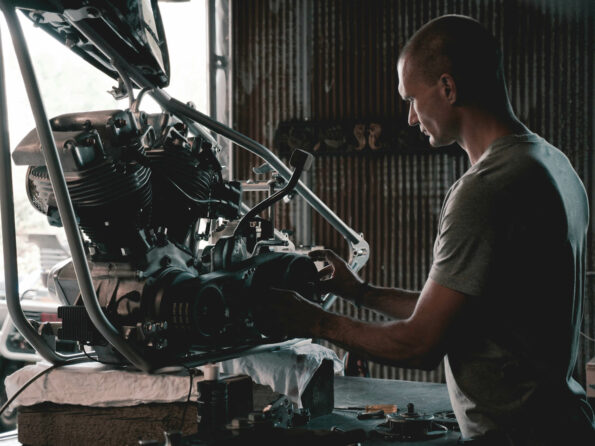Mechanics undergo extensive training to be able to diagnose and repair issues with people’s cars. The technical knowledge and prowess required to become a mechanic can take years to obtain. We’ll look at four different methods employed by mechanics when they are presented with a car that has some kind of problem and asked to fix it.
1. Specialised diagnostic equipment
All mass-produced cars since 1996 have onboard computers. When a car owner reports a problem with their vehicle, mechanics can plug diagnostic tools into them via the OBD-II (on-board diagnostics) port and read stored data (emissions, distance, speed, engine performance, etc), then use their experience and knowledge to narrow down potential causes. These tools yield error codes if problems have arisen. The OBD port is usually in the footwell, tucked up behind the dashboard, but it does vary per manufacturer.
There are 5 signal protocols used by various manufacturers, but since 2008, all vehicles use ISO 15765 CAN (Controller Area Network).
Codes vary from one manufacturer to another. For example, let’s say you have a Volvo and Volvo Service Brisbane discovers Error Code 2-2-2. This indicates that a vehicle’s passenger module has a break in its wiring. Each vehicle manufacturer has its own code book. The codes shown by Volvo’s vehicles will not be the same as those shown by Land Rover or Lamborghini. Taking your car to an approved dealership is therefore one of the best ways to ensure that it’s repaired quickly and efficiently, as they will have access to specialised diagnostic tools made for your car’s manufacturer.
Consumer-grade scanners are available for the automotive hobbyist and those who want to diagnose their vehicle before committing to taking it to a mechanic.
2. Conducting visual inspections
Diagnostic equipment is the simplest way for mechanics to diagnose car issues. They plug these tools in, then are shown codes on an LED screen. For older vehicles (or after codes have been given and the problem’s root is not obvious) mechanics will perform visual inspections. During training, mechanics are taught to identify vehicular faults with precision. They look for visible signs of wear, corrosion, or damage, as well as fractures or leaks. Aural inspections are also performed, which involve listening for irregular noises when a car is running. Sometimes tactile inspections are performed, which is when mechanics use touch, searching for unusual vibrations or sources of heat.

3. Performing test drives
The previous two diagnostic tests are usually performed before test drives, as test driving a vehicle that has a serious fault can be dangerous, or it could leave the mechanic stranded. Diagnostic test drives are when devices are plugged into vehicles, then record data while the mechanic is driving it. This data can then be analyzed, and faults can be identified. Oxygen sensors are typically built into these devices so that mechanics can establish how well-fueled an engine is. There are specific manoeuvres sometimes used by mechanics that can help them to get a better understanding of what is wrong with a car. For example, a broken or loose tie rod will clunk when the vehicle is turning.
4. Using their noses
Sometimes, smells released by vehicles can help mechanics identify vehicular problems and faults. If a car’s engine is releasing a specific smell, such as fuel, for example, it could indicate an internal leak. Brakes and clutches also have specific smells. Smell tests are typically performed in combination with previous methods outlined above and are not the most accurate way of identifying faults but can still nonetheless come in handy if a mechanic has a rough idea of what’s wrong. For example, a brake binding on a brake disc will overheat and cause the brake to smell, plus it may also create a worn area on the disc that would be picked up in a visual inspection.
Mechanics are highly skilled and professionally trained individuals who use their knowledge and expertise of cars to ensure clients leave their garages satisfied. Different tools and strategies are employed by them to identify faults, from diagnostic sensors to aural tests. Make sure that you take your car to an official dealership to have problems addressed so you can get the best possible care.
